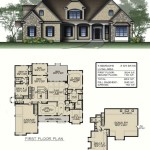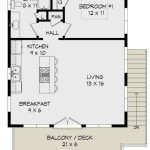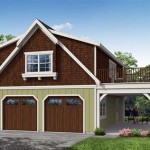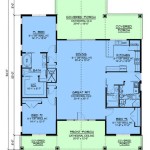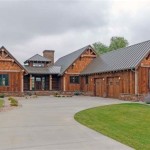High Ceiling Open Floor Plan: A Guide to the Design Style
The "high ceiling open floor plan" has become a highly sought-after design choice in contemporary architecture. This architectural style seamlessly blends spaciousness with visual grandeur, creating an airy and inviting atmosphere. The combination of high ceilings and an open layout optimizes natural light, expands visual space, and enhances the overall aesthetic appeal of a living environment. This article explores the key features of this design style, its advantages, and considerations for incorporating it into your own living space.
The Essence of High Ceiling Open Floor Plans
High ceiling open floor plans are characterized by their expansive verticality and lack of defined barriers between rooms. The absence of walls separating living areas creates a sense of continuity and flow, allowing light to circulate freely throughout the space. The towering ceilings contribute to a feeling of openness and grandeur, making the space feel larger and more inviting. These designs often boast impressive structural elements like exposed beams, vaulted ceilings, or skylights, adding to the architectural appeal and visual dimension.
Advantages of High Ceiling Open Floor Plans
The high ceiling open floor plan offers numerous advantages that contribute to a more comfortable and aesthetically pleasing living experience. Here are some of the prominent benefits:
1. Enhanced Natural Light and Ventilation
The open floor plan facilitates natural light penetration, creating a bright and airy environment. High ceilings further amplify this effect by allowing light to reach deeper into the space, eliminating dark corners and promoting a sense of spaciousness. Furthermore, the vertical space enables better ventilation, allowing for improved air circulation and reducing the need for artificial cooling systems.
2. A Sense of Openness and Expansiveness
The absence of dividing walls and the presence of high ceilings create a sense of openness and spaciousness. The uninterrupted flow of space visually expands the area, making it feel larger and more welcoming. This design approach is particularly beneficial for smaller spaces, as it maximizes the perceived size and creates a sense of grandeur.
3. Flexibility and Adaptability
The open floor plan provides flexibility in furniture arrangement and room functionality. The absence of fixed walls allows for adaptable layouts that can be easily altered to suit changing needs and preferences. This adaptability is particularly valuable in contemporary living, where spaces are often used for multiple purposes.
4. Enhanced Acoustic Performance
High ceilings can contribute to improved acoustics in a space. The increased volume of the room allows for sound to dissipate more efficiently, reducing echoes and improving sound clarity. However, it's crucial to consider soundproofing measures to manage potential noise levels, especially in open-plan kitchens or living rooms.
Considerations for Implementing High Ceiling Open Floor Plans
While the advantages of high ceiling open floor plans are undeniable, it's crucial to consider certain factors before implementing this design style:
1. Structural Considerations
The construction of high ceilings requires careful structural engineering to ensure stability and load-bearing capacity. The weight of the ceiling and the potential for additional stress from roof loads need to be factored in during the planning phase. Consulting with a qualified structural engineer is essential to ensure the safety and integrity of the structure.
2. Heating and Cooling Costs
High ceilings can pose challenges in maintaining a comfortable temperature throughout the space. The larger volume of air requires more energy to heat or cool, potentially leading to higher heating and cooling costs. Proper insulation, efficient climate control systems, and sustainable design choices can help mitigate this issue.
3. Privacy Considerations
The lack of walls in an open floor plan can raise concerns about privacy. Careful furniture arrangement and the use of room dividers or curtains can help define different zones within the space, offering a degree of privacy without completely sacrificing the open layout.
4. Cost Implications
Constructing high ceilings and open layouts can be more expensive than traditional designs. The complexities involved in structural modifications, increased material usage, and specialized construction techniques can contribute to higher construction costs. It's crucial to factor in these costs at the early stages of planning.
The high ceiling open floor plan is a design choice that offers a unique blend of spaciousness, aesthetics, and functionality. While it presents some challenges, its advantages in creating a bright, airy, and visually appealing space make it a popular choice for modern homeowners. By carefully considering the factors discussed above, designers and homeowners can effectively harness the benefits of this architectural style while mitigating potential downsides.

Benefits Of Open Floor Concepts And High Ceilings Ameri Star Homes

Open Concept Modern Living Room

Luxury Contemporary Style House Plan 5074 Maclennon

Home

Open Concept Floor Plan With Vaulted Ceilings Rustic Kitchen Vancouver By My House Design Build Team Houzz Ie

Open Plan Loft With Amazingly High Ceilings

Pin Page

High Ceilings And Materials Are Prominent Design Elements In This New House

Cathedral Ceiling House Plans Small W High Ceilings

Adding Dramatic Impact With High Ceilings In Your Living Room The House Of Grace

